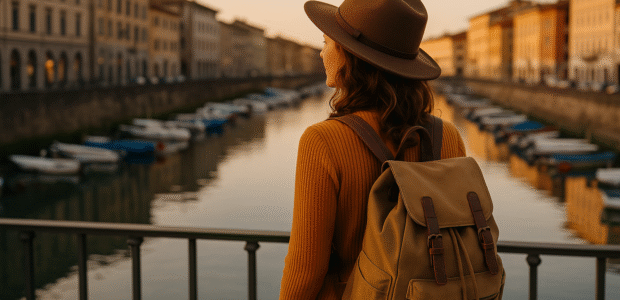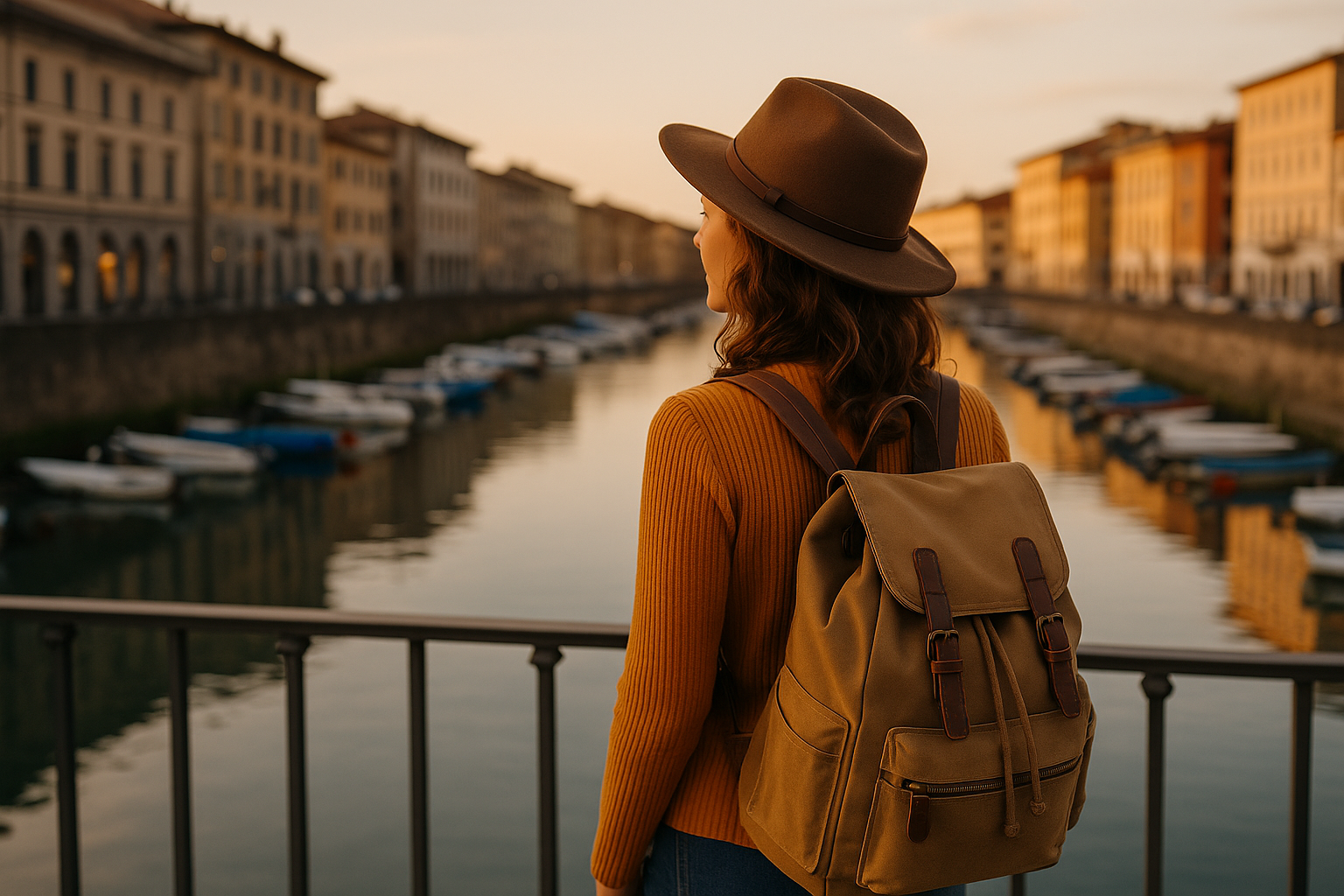A Complete Guide for Confident and Secure Adventures
Traveling solo is one of the most liberating and transformative experiences you can have — but it also requires an extra layer of planning and awareness. If you’ve ever wondered how to travel solo safely, you’re not alone. Millions of people embark on solo adventures every year, but the key to a successful solo trip lies in preparation, mindfulness, and smart decision-making.
From choosing the right destination and securing your belongings to understanding local customs and booking verified tours, this comprehensive guide will walk you through every essential step. For those who haven’t yet created a full plan, you may want to first check this travel itinerary creation guide to map out your journey efficiently.
Table of Contents
-
Why Solo Travel Is Worth It
-
Benefits of Traveling Alone
-
Common Solo Travel Myths
-
Preparing for Your Trip
-
Choosing a Safe Destination
-
Planning Your Itinerary and Budget
-
Booking Tours and Activities Safely
-
Health and Insurance Essentials
-
How to Stay Safe While Exploring Alone
-
Social Tips: How to Meet People as a Solo Traveler
-
Safety Tips for Female Solo Travelers
-
Safety Essentials and Gear
-
Avoiding Scams and Unsafe Areas
-
Trusting Your Instincts
-
Final Thoughts
-
FAQs
Why Solo Travel Is Worth It
Before diving into the how-to’s, it’s important to understand why solo travel is such a powerful life choice. Traveling solo gives you:
-
Freedom to create your own schedule
-
Opportunities to discover who you are
-
Space to reflect, grow, and heal
-
Confidence that comes from independence
-
The ability to meet locals and fellow travelers more organically
Yes, there are risks, but the rewards can be absolutely life-changing.
Benefits of Traveling Alone
Still unsure whether solo travel is for you? Here are some benefits:
-
Total Flexibility: Go where you want, when you want.
-
Self-Discovery: Being on your own challenges you and reveals your inner strengths.
-
Deeper Cultural Immersion: Without the buffer of a companion, you connect more directly with your environment.
-
New Friendships: Solo travelers are often more approachable and meet more people.
-
Empowerment: Every small success on your trip boosts your confidence.
Common Solo Travel Myths
Let’s bust a few myths that often scare people away from solo travel:
-
Myth 1: It’s dangerous everywhere.
Truth: Many countries are statistically safer than your home city. -
Myth 2: Solo travelers are lonely.
Truth: Solo travelers often meet more people than those in groups. -
Myth 3: It’s only for extroverts.
Truth: Introverts often thrive in solo travel by setting their own social boundaries. -
Myth 4: Women shouldn’t travel alone.
Truth: Women travel solo all over the world. With awareness and precautions, it’s entirely possible.
Preparing for Your Trip
Preparation is key to staying safe. Here’s a checklist to get started:
-
Valid passport with at least 6 months before expiration
-
Visa(s) arranged if needed
-
Travel insurance with emergency coverage
-
Copies of important documents stored in the cloud and offline
-
Emergency contacts listed and shared with a friend/family member
-
Basic knowledge of the local language
-
Apps downloaded for navigation, translation, and booking
Choosing a Safe Destination
Your destination will significantly affect how safe your solo travel experience is. Consider:
-
Safety Index Scores: Use platforms like Numbeo or travel.state.gov
-
Language Barrier: Choose countries where you can communicate
-
Solo Travel Infrastructure: Countries like Japan, Portugal, Iceland, Canada, and Thailand are excellent for solo travelers
-
Local Culture: Respect the norms and dress codes
-
Transport: Public transportation should be reliable and secure
Planning Your Itinerary and Budget
Mapping your route ahead of time will help you stay on track and avoid risky detours. Budgeting will help you avoid running out of money in unfamiliar territory.
Tips for a safer itinerary:
-
Stick to tourist-frequented areas for accommodations
-
Schedule arrivals during daylight
-
Avoid overbooking and tight transfer windows
-
Share your itinerary with a trusted person
-
Use paper maps as backups
Need help organizing your route? Use our detailed itinerary creation guide to get your trip off on the right foot.
Booking Tours and Activities Safely
Tours are a great way to experience a new place safely — especially if you’re unsure of the language or want local insights.
Here’s what to do:
-
Choose reputable platforms like Viator to book verified and reviewed activities
-
Read user reviews thoroughly
-
Don’t pay in cash for random street tours
-
Book group tours if you want to meet people safely
-
Save digital and paper confirmations
Health and Insurance Essentials
Health is often overlooked in travel safety. Here’s how to protect yourself:
-
Vaccines: Check CDC or WHO websites for regional health requirements
-
Travel Insurance: Get coverage for medical emergencies, theft, and trip cancellations
-
Emergency Numbers: Save them on your phone for local police, ambulance, and consulate
-
Medical Kit: Include painkillers, bandages, antibacterial wipes, motion sickness tablets, and personal medication
How to Stay Safe While Exploring Alone
Safety doesn’t mean fear. It means smart decisions. Here’s how to stay protected while out and about:
-
Dress appropriately for local customs
-
Avoid isolated areas after dark
-
Trust your gut – if it feels off, walk away
-
Stay alert, not distracted by phones or headphones
-
Don’t flaunt valuables like jewelry or electronics
-
Keep your drink with you in bars or clubs
-
Limit alcohol intake when alone
Social Tips: How to Meet People as a Solo Traveler
Meeting others can enhance your journey and boost safety. Try these:
-
Stay in hostels or co-living spaces
-
Join free walking tours or cultural meetups
-
Use apps like Meetup or Couchsurfing Events
-
Take a class (cooking, language, dance)
-
Be open, smile, and initiate conversations
Just remember, not everyone you meet has good intentions. Trust your instincts.
Safety Tips for Female Solo Travelers
Women traveling solo can do so safely with extra mindfulness:
-
Choose women-only dorms or hotels with solid reviews
-
Carry a door stopper or travel lock for hotel rooms
-
Use a decoy wallet with small change
-
Wear a fake wedding ring in conservative areas
-
Avoid telling strangers you’re alone – say you’re meeting a friend
-
Trust women or family-run businesses for help
Safety Essentials and Gear
Packing right is part of safety. Essentials include:
-
Anti-theft backpack
-
RFID-blocking wallet
-
Portable door lock or wedge
-
Flashlight or headlamp
-
Whistle or personal alarm
-
Portable charger/power bank
-
Local SIM card or global roaming service
Avoiding Scams and Unsafe Areas
Every country has its share of tourist scams. Here are ways to stay ahead:
-
Research common scams before arriving
-
Avoid over-eager “guides” near train stations or airports
-
Don’t hand over your passport to strangers
-
Beware of distractions — they often precede pickpocketing
-
Use ATMs in secure, well-lit places
-
If something feels rehearsed, it’s probably a scam
Trusting Your Instincts
Your intuition is your most powerful tool. If something feels off:
-
Don’t second-guess yourself
-
Remove yourself from the situation
-
Ask for help from official personnel (police, hotel staff)
-
Always have a backup plan
Final Thoughts
Learning how to travel solo safely is not just about rules — it’s about empowerment. The more you understand and prepare, the more confidently you can explore the world on your own terms.
Solo travel gives you the freedom to design your own story — filled with adventure, challenge, and self-discovery. Stay alert, trust your instincts, make informed choices, and the world becomes your playground.
For guided tours, experiences, and group activities that can add both joy and safety to your trip, explore Viator—your trusted companion in global adventures.
FAQs About Solo Travel Safety
Q1: Is it really safe to travel alone?
Yes, millions do it each year. With smart planning and awareness, solo travel can be very safe.
Q2: What are the best destinations for solo travelers?
Japan, Iceland, Canada, Portugal, New Zealand, and Thailand are excellent choices.
Q3: How do I stay connected during solo travel?
Use international SIM cards, local eSIMs, or Wi-Fi hotspots to stay online and in touch.
Q4: What if I get sick or lost while traveling alone?
That’s why insurance, emergency contacts, and local embassies are essential. Always carry your ID and a local address.
Q5: How do I avoid being lonely on a solo trip?
Join group tours, stay in social hostels, and attend local events. The solo travel community is incredibly welcoming.


